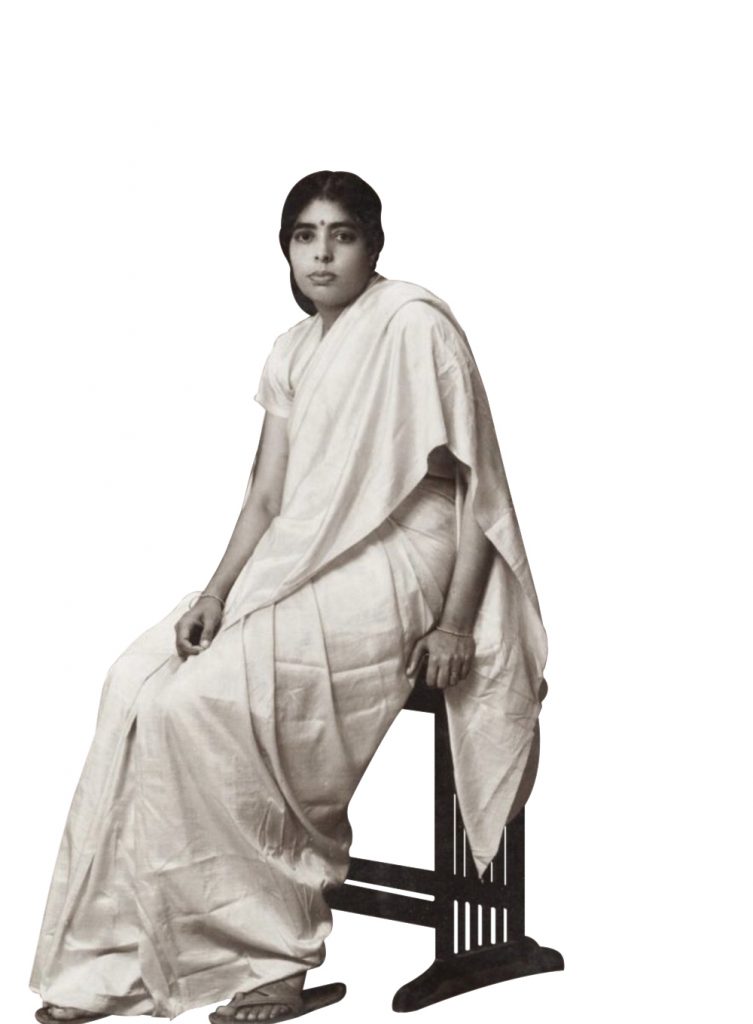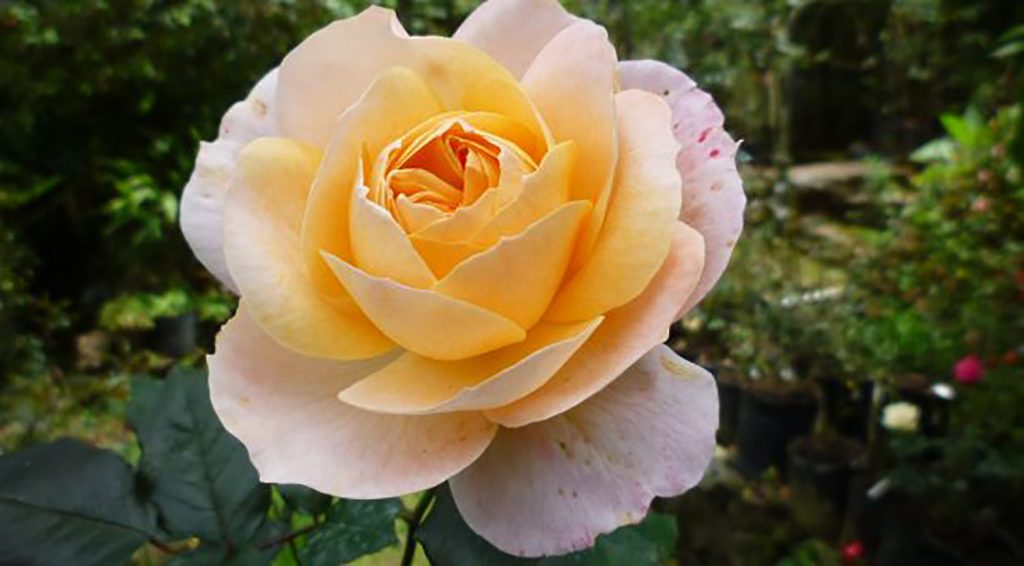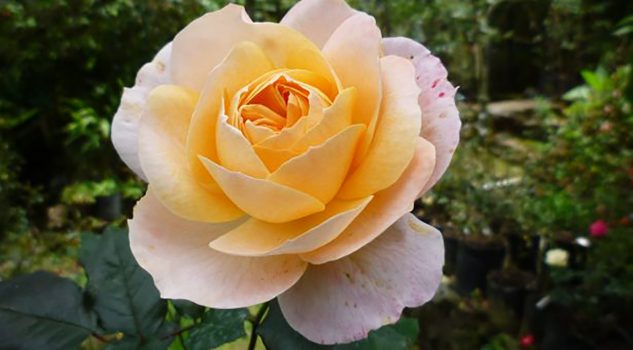Driven by her love for nature and plants, Dr Janaki Ammal dedicated her life to research in botany. Jeremy D’Cruz traces her journey from Kerala to the United Kingdom to Chennai
 Clad in a delicate yellow sari, purchased at the Bangalore emporium, her eyes peered into the lens of a microscope. Dr Janaki Ammal Edavalath Kakkat immersed herself in research, despite the slowly dilapidating structure that held together as a make-shift laboratory in Maduravoyal, Chennai.
Clad in a delicate yellow sari, purchased at the Bangalore emporium, her eyes peered into the lens of a microscope. Dr Janaki Ammal Edavalath Kakkat immersed herself in research, despite the slowly dilapidating structure that held together as a make-shift laboratory in Maduravoyal, Chennai.
Ammal, as she preferred to be known to reflect her independent spirit, was a pioneer in cytogenetics, her fierce spirit of self-reliance cajoling the explorer in her to challenge stereotypes. This phenomenal woman was on a mission and undaunted by discrimination. In a way, she was a feminist even before the word was coined.
On a Quest
Dr Janaki Ammal’s love for plants manifested itself into a productive career, driven by sheer hard work. These lessons were passed on to her from her father, Dewan Bahadur Edavalath Kakkat Krishnan, sub-judge of the Madras Presidency, who had a great love for the Natural Sciences and encouraged his daughters in intellectual pursuits.
Draped in her yellow sari, she journeyed from the hills of Kerala and the gardens in Bangalore to the sparsely populated regions in Ladakh, studying biodiversity while significantly contributing to its development. A simple cotton jhola (bag) over her shoulder contained her various findings.
Weaving Her Way Through
Successful people rise above the situations they are presented with, their work a testimony to their single-minded dedication. Dr Janaki Ammal, before she was a botanist, was a revolutionist. A visionary, she was able to overcome the many pitfalls that she faced in the form of gender bias. One can only imagine how petty it must have seemed for a scholar who had a Master’s from the University of Michigan in 1925 and had been celebrated as an Oriental Barbour Scholar. But this was no hindrance to Janaki Ammal, who went on to become one among the few Asian women to be conferred with a Doctorate in Science in 1931, from her alma mater.
Chennai, formerly known as Madras, was her home. On completion of her doctoral degree, she returned to her motherland to once again continue teaching her favourite subject at Maharaja’s College of Science, Trivandrum.
Leading a life of austerity, she channelled her learning into a culmination of scientific achievements, leaving India enriched. Her research in cytogenetics (a branch of genetics concerned with how the chromosomes relate to cell behaviour) allowed India to breed its own hybrid variety of sugarcane, removing its dependence on foreign imports, thus thriving while feeding generations in its own biosphere, and helping India sweeten her cups of chai.
Workplace discrimination would then find Janaki travelling to London, and her passion and intensity leading her to become a part of the Royal Horticulture Society (1940–1951). While German bombs shattered London’s windowpanes, she gently swept them up, only to continue her work as the Assistant Cytologist at the John Innes Horticultural Institution.
Tough and resilient, Janaki Ammal’s research centred on the flower magnolia, delicately beautiful yet resilient, making it a horticultural legend, maybe because it echoed her indomitable spirit. Magnolia Kobus Janaki Ammal is a beautiful white flower that is a tribute of love that the Royal Horticulture Society houses today.
Firm and Focused
Janaki was a devout disciple of the Gandhian principle, leading a minimalistic way of life, devoting herself to the altar of science. This quest of learning uprooted obstacles along her way. Whether it was the icy winds of Ladakh or the summers in Wayanad, they only enriched her search for the native plant and the folklore encompassing them.
Travelling overseas exposed the West to her brilliance. Friendships, mentors and tutelage later led to the book, The Chromosome Atlas of Cultivated Plants, a culmination of genius, with her mentor C.D. Darlington.
Natural science taught her environmental consciousness, which saw her play a pivotal role against the hydro-power dam in Kerala’s Silent Valley as it would have destroyed the forest’s habitat along with the natural canopy. The hydropower project was finally scrapped and Silent Valley was declared a National Park on November 15, 1984. It was a watershed moment in environmental history.
This was rewarded with an invitation to the Weener Gren Foundation for Anthropological Research, Princeton, United States, in 1955. Dr Janaki was the only woman present at the symposium, and one could only imagine the ambience; a woman and a scientist clad in a yellow sari, in an environment that was otherwise male dominated, challenging manmade environmental travesties.
 Accolades
Accolades
• The Ministry of Enviroment and Forest
• The Ministry of Enviroment and Forest created the National Award in Taxonomy in the year 2000.
• The Janaki Ammal Herbarium (Indian Institute of Integrative Medicine) in Jammu.
• Fellow of the Indian Academy of Science in 1935
• Fellow of the Indian National Science Academy in 1957.
On a personal invitation from the then Prime Minister, Pandit Jawaharlal Nehru, Janaki Ammal, on her return, was appointed as ‘Officer on Special Duty’ to the Botanical Survey of India, 1954.
Janaki Ammal, a scientist, a rebel with a cause that was larger than life, constructed on scientific contributions that benefited her motherland…
Fiercely guarding her personal life, she let her work speak for her — chromosomes, ethnobotany and cytology. Today, housed in Kodaikanal is a delicate double-petalled rose, with a hint of pink developed by plant breeders Girija and Viru Viraraghavan; a tribute to woman who stopped at nothing, her vision elevating her science beyond life’s trivialities. The Government of India conferred the Padma Shri on Janaki Ammal in 1977.
India will truly be indebted to Janaki Ammal Edavalath Kakkat for making sugar sweeter.
With inputs from Dr Janaki’s grandnieces
Akhila Ravikumar, Geeta Doctor and Suchitra Vivek

The article captures that “pursuit of excellence”.
A wonderful narrative of a remarkable woman, who was light years ahead of her time.
Congratulations on the in-depth study.
The reading time,has been rewarding. Keep the print line flowing.